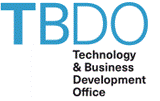License CRG Technologies

Explore our Technology Portfolio
If you are exploring licensing opportunities at the CRG, the TBDO can guide you to a wide range of suitable researchers and their technologies.
Categories
Featured Technologies
Most Popular Keywords
Latest Technologies Published
Search our database for an up-to-date listing of CRG intellectual property available for licensing

